
|

|
|
Home Site Search Contact Us Subscribe
|
|
|
"Harry Seidler: Architecture, Art and Collaborative Design" A new traveling exhibition celebrates the 90th anniversary of the birth of Harry Seidler, the leading Australian architect of the 20th century who followed his convictions and vision. By Vladimir Belogolovsky October 3, 2012 Editor’s note: The exhibition, curated by Vladimir Belogolovsky, kicks off its international tour tomorrow, October 4, at the Museum of Estonian Architecture in Tallinn, Estonia, and will travel to Sofia Bulgaria; Riga, Latvia; Houston, Texas, and Asheville, North Carolina, USA; Winnipeg, Canada; Sydney, Australia; and Vienna, Austria through January 2015. See complete schedule below.
Update: Click here to see some wonderful images from the October 4th exhibition opening, with an excerpt
“As much as the needs of fact, the needs of the spirit and the senses, must be satisfied. Architecture is as much a part of the realm of art as it is of technology; the fusion of thinking and feeling.” — Harry Seidler, 1963
I would draw attention to two reasons why Harry Seidler is important and why he will always be important. First, it is his love for architecture, his position on following his convictions to which he was always true, and a mission to make the world a better place where architecture is a big part of it. He was a real crusader – and not just for his own work but for what he believed – whether voicing his support for Jorn Utzon’s Sydney Opera House, or protesting against an unfitting addition to Marcel Breuer’s Whitney Museum in New York by Michael Graves. Second is the importance of inspiration, which is crucial, particularly today when so many architects are entrenched with their ambitions compromised and scaled down. Seidler’s vision was grand, and he drew his inspiration from a multitude of sources – art, geometry, history, and so on. I would particularly stress the importance of art (in the case of Seidler it is the work of American abstract expressionists such as Frank Stella) as an endless source of creative inspiration for architecture.
Harry Seidler (June 25, 1923, Vienna – March 9, 2006, Sydney) was the first architect to fully express Bauhaus principles in Australia, exemplified by his first project, which was built in 1950 for his parents – the Rose Seidler House in Wahroonga, north of Sydney. All his life, he was, in his own words, “the torchbearer of modern architecture” – a sincere missionary for the cause of Modernism. Seidler left a distinct mark on our world, most noticeably with his Australian Embassy in Paris, the Hong Kong Club in Central Hong Kong, Wohnpark Neue Donaularge residential community in Vienna, and, above all, through his many characteristic towers, which essentially define the skyline of contemporary Sydney.
A native of Vienna, Seidler was the second son in the upper middle-class Jewish family of Max Seidler, a self-made textile business owner, and Rose Seidler, who came from a large family that owned a timber cutting business. In 1938, at the age of 15, he fled to England soon after Nazi Germany invaded Austria. In May 1940, he was interned by British authorities as an “enemy alien,” transported first to the Isle of Man and then to a detention camp near Quebec City in Canada. In October 1941, he was released on parole to study architecture at the University of Manitoba in Winnipeg.
Seidler received his master’s degree at Harvard University’s Graduate School of Design, where he studied on scholarship from 1945-46 under Walter Gropius and Marcel Breuer, a lifelong mentor and friend. He then attended Black Mountain College in North Carolina, where he studied under the painter Josef Albers, followed by employment as Breuer’s first assistant in New York. In 1948, Seidler was invited by his mother to come to Australia, where his parents immigrated after the war, to design a house for them. En route to Australia, Seidler worked at Oscar Niemeyer’s office in Rio de Janeiro for a few months.
In September 1948, Seidler established a practice in Sydney. The ambitious 25-year-old’s tiny studio/apartment featured a prominently displayed statement: “Australia’s present day building practices are outdated. They cry out for rejuvenation. It is the policy of this office to create new standards which will produce a progressive contemporary architecture.” The architect’s prolific career to follow, spanning almost 60 years, proved him right. Nearly 160 of his projects – from single-family houses to apartment buildings, multi-story office towers to civic and cultural centers, as well as important government commissions, were realized in Australia, Austria, France, Israel, Italy, Mexico, and Hong Kong.
Seidler’s instantly recognizable body of work, marked by a strong sense of geometry, Baroque in origin, a feel for robust balanced compositions, a knowledge of structure and materials, and the use of inventive shading devices that effectively respond to the intense Australian sun, distinguished him as the most uncompromising and artistic architect in his adopted country, and one of the most persevering and ingenious architects of his time anywhere. His architecture embodies numerous sources and influences that he strategically sought out and refined over the course of his career: confidence, social purpose, and a methodological and collaborative approach to design from Gropius; residential types, the power of concrete, and the warmth of wood from Breuer; standardized building systems and expressive structural language from Nervi; sculptural fluidity and lyrical forms from Niemeyer; and a profound understanding of how our eyes react to visual phenomena from Albers.
From the 1970s on, Seidler’s hand became increasingly influenced by modular works of American abstract expressionist painters and sculptors, evolving into a distinctly personal artistic language yet to be recognized by the profession internationally. Seidler’s late work, however free and sculptural, is never arbitrary. His majestic forms were perpetually defined by rational planning, efficiency of standardized construction, and social and environmental considerations.
Vladimir Belogolovsky, founder of the New York City-based Intercontinental Curatorial Project, curates architectural exhibitions worldwide. Trained as an architect at Cooper Union, he is the author of books: Felix Novikov, Green House, Soviet Modernism: 1955-1985, and Harry Seidler (Rizzoli, 2014). His Harry Seidler exhibition will travel to Europe, North America, and Australia from 2012 to 2014. vbelogolovsky@gmail.com
“Harry Seidler: Architecture, Art and Collaborative Design” is a traveling exhibition celebrating the 90th anniversary of the birth of the leading Australian architect of the 20th century. The exhibition traces Austrian-born Seidler’s key role in bringing Bauhaus principles to Australia and identifies his distinctive place and hand within and beyond modernist design methodology. The 15 featured projects – five houses and five towers in Sydney, and five major commissions beyond Sydney – focus on Seidler’s lifelong creative collaborations, a pursuit he directly inherited from Bauhaus founder Walter Gropius, with progressive artistic visionaries: architects Marcel Breuer and Oscar Niemeyer, engineer Pier Luigi Nervi, photographer Max Dupain, and artists Josef Albers, Alexander Calder, Norman Carlberg, Sol LeWitt, Charles Perry, Frank Stella, and Lin Utzon. The exhibition was developed by Intercontinental Curatorial Project with Penelope Seidler and Harry Seidler & Associates in Sydney, and is presented through architectural models, sculpture maquettes, photographs, films, correspondence, books, scrapbooks, periodicals, drawings, original sketches, and other items provided by the architect’s family, Historic Houses Trust of New South Wales, The Josef & Anni Albers Foundation, The Marcel Breuer Digital Archive at Syracuse University, and the private archives of artists Norman Carlberg, Charles Perry, and Lin Utzon.
Harry Seidler: Lifework, by Vladimir Belogolovsky with additional texts by Chris Abel, Barry Bergdoll, Norman Foster, Kenneth Frampton, and Oscar Niemeyer, and designed by Massimo Vignelli, will be published by Rizzoli in March 2014
Exhibition schedule:
Museum of Estonian Architecture, Tallinn, Estonia: October 4 – November 25, 2012 National Gallery for Foreign Art, Sofia, Bulgaria: December 20, 2012 – January 20, 2013 Latvian National Museum of Art, Riga, Latvia: February – March, 2013 AIA Center, Houston, TX, USA: April 4 – May 31, 2013 Black Mountain College Museum, Asheville, NC, USA: June 14 – September 7, 2013 University of Manitoba, Winnipeg, Canada: September 12 – October, 2013 Museum of Sydney, Sydney, Australia: July 26 – November 9, 2014 Planungswerkstatt, Vienna, Austria: December, 2014 – January, 2015
Also by Vladimir Belogolovsky
Colombia: Transformed / Architecture = Politics The curators of the exhibition making its world debut in Chicago this week throw the spotlight on five Colombian architects who leverage brick, concrete, and glass forms to improve the lives of ordinary people. One-on-One: We architects are politicians: Interview with Giancarlo Mazzanti "Now is the time to think of how architecture can change the world. We architects can assume that role and make a real difference in how people live and behave." One-on-One: Architecture that leads to a point: Interview with Daniel Libeskind "Every building, every city should have a story." One-on-One: Architecture of Emotion and Place: Interview with Bartholomew Voorsanger, FAIA, MAIBC The architect's aspiration to create expressive, dynamic spaces is absolutely the key to his work. One-on-One: Architecture as a Social Instrument: Interview with Bjarke Ingels of BIG It is not for nothing that this young architect is referred to as the "Yes Man" with a willingness - and ability - to please just about everyone. One-on-One: Putting Colors Together: An Interview with Will Alsop For Alsop, it is the act of painting, the state of losing control - its imprecision and intuitiveness - that best define his initial vague intentions - and what ultimately brings him close to the mystery of inventing new architecture. One-on-One: The Art of Ennobling Communities: Interview with Sara Caples and Everardo Jefferson These architects have proven time and time again that architecture can transform reality and change attitudes. One on One: Elusive Architecture: Interview with Kengo Kuma "I want to create a condition that is as vague and ambiguous as drifting particles. The closest thing to such a condition is a rainbow."
|
(click on pictures to enlarge) 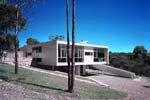 Max Dupain Rose Seidler House, Wahroonga, Sydney, Australia, 1948-50 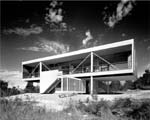 Max Dupain Julian Rose House, Wahroonga, Sydney, Australia, 1949-50 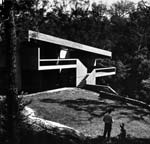 Max Dupain Harry and Penelope Seidler House, Killara, Sydney, Australia, 1966-67 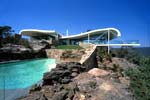 Eric Sierins Berman House, Joadja, New South Wales, Australia, 1996-99 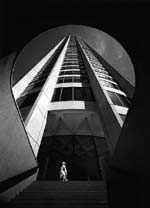 Max Dupain Australia Square, Sydney, Australia, 1961-67 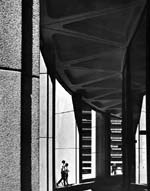 Max Dupain Australia Square, Sydney, Australia, 1961-67 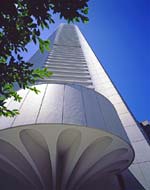 Max Dupain MLC Centre, Sydney, Australia, 1972-78 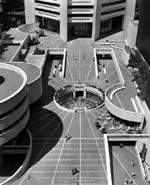 Max Dupain MLC Centre, Sydney, Australia, 1972-78 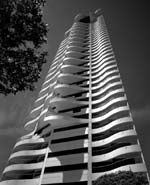 Eric Sierins Horizon Apartments, Darlinghurst, Sydney, Australia, 1990-98 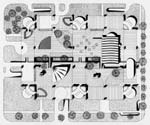 Harry Seidler & Associates Trade Group Offices (now called Edmund Barton Building) site/roof plan, Canberra, Australia, 1970-74  Max Dupain Australian Embassy (seen from the Eiffel Tower), Paris, France, 1973-77 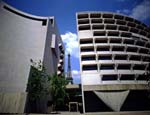 Max Dupain Australian Embassy, Paris, France, 1973-77 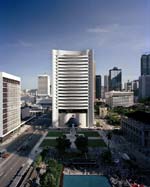 John Gollings Hong Kong Club, Hong Kong, 1980-84 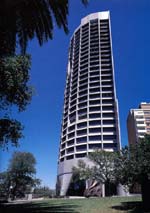 John Gollings Shell Headquarters, Melbourne, Australia, 1985-89 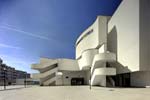 Eric Sierins Wohnpark Neue Donau, Vienna, Austria 1993-98; Hochhaus Tower: 2001 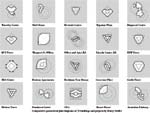 Harry Seidler & Associates Geometric comparative diagrams of 20 buildings and projects by Harry Seidler. |
© 2012 ArchNewsNow.com